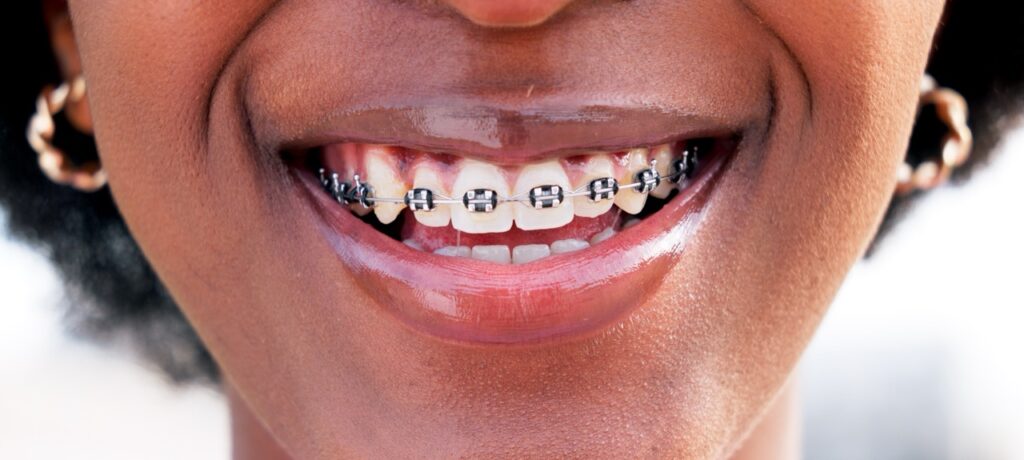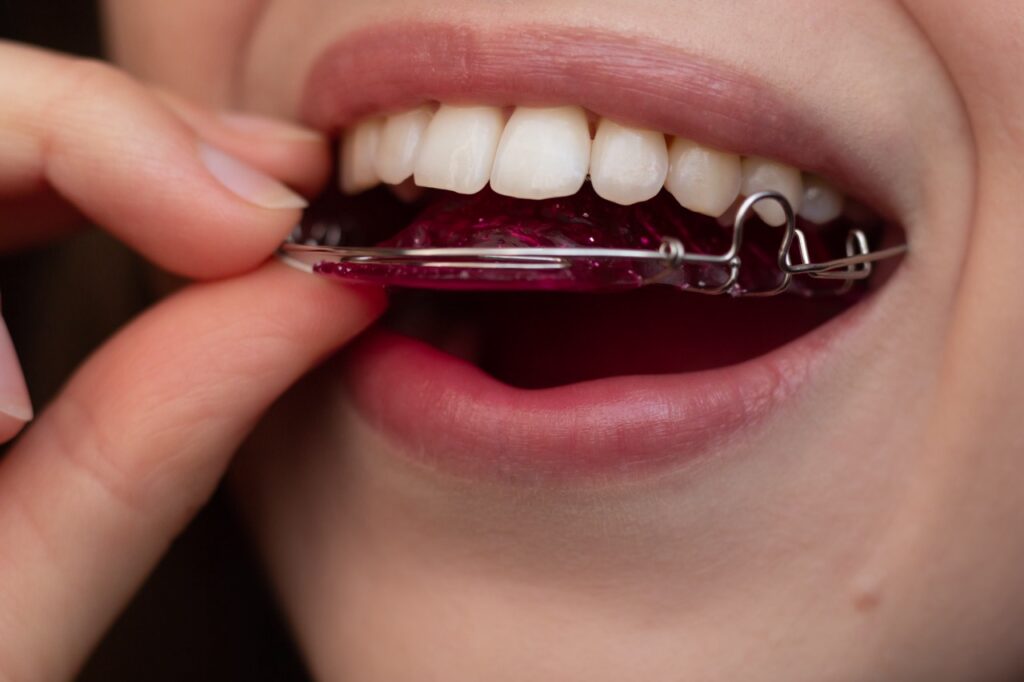Resource Library
Start Reading

Wearing braces raises questions, especially if you’re going the traditional route of metal brackets, wires, and elastic bands.
What foods can and can’t you eat with braces? How do you brush teeth with braces? What do you do if your braces or other types of orthodontics are causing you pain?
Here at Penn Dental Family Practice (PDFP), our orthodontists are used to giving patients braces tips to help them navigate their treatment successfully.
Keep reading for expert advice that can help you tackle the challenges of wearing braces while looking forward to the more beautiful smile that awaits you.
 Typically, getting fully used to brand-new braces takes one or two weeks. You may experience some tenderness and changes in saliva production at first, but these sensations will ease as your mouth gets used to the brackets and wires.
Typically, getting fully used to brand-new braces takes one or two weeks. You may experience some tenderness and changes in saliva production at first, but these sensations will ease as your mouth gets used to the brackets and wires.
You may also experience short-term soreness when your dentist or orthodontist adjusts your braces. Adjustments take place throughout treatment—generally, every four to six weeks—to ensure your teeth are moving in the desired direction.
Here are some tips for easing discomfort:
Choosing the right foods is crucial to ensure comfort and avoid damage to your appliances. Opt for naturally soft foods to put less pressure on your teeth. Examples include:
Things you can’t eat with braces—or shouldn’t—include sticky, chewy, and crunchy foods.
Sticky candies, chewing gum, and caramel can cling to braces. They’re difficult to clean and increase the risk of damage. And nuts, crunchy tacos, corn on the cob, and whole fruit you must sink your teeth into might dislodge brackets or wires.
It’s always a good idea, braces or no braces, to keep sugary snacks to a minimum because their sugars contribute to tooth decay.
When you eat, cut food into bite-sized pieces. Doing so makes chewing easier and reduces strain on your braces.
 Braces create additional crevices and nooks in your mouth where food can get trapped. If you don’t remove this food debris promptly through brushing, it can lead to plaque buildup, decay, and cavities.
Braces create additional crevices and nooks in your mouth where food can get trapped. If you don’t remove this food debris promptly through brushing, it can lead to plaque buildup, decay, and cavities.
Here’s a quick overview of how to brush teeth with braces effectively:
Flossing while wearing braces may seem tricky. But with the proper tools and techniques, it’s entirely manageable.
Here are a few “flossing with braces” tips:
Wear your appliances as often and as long as your dentist or orthodontist tells you to wear them.
Headgear, retainers, and other orthodontic appliances are essential parts of your treatment. Failure to wear them as directed can lead to complications. It may result in prolonged treatment times, insufficient correction of misalignments, or the need for more invasive (and expensive) procedures later on.
Wearing orthodontic braces with headgear with other types of appliances may feel frustrating. But focus on the long-term benefits. Your teeth’s improved alignment will support your improved oral health and make your daily oral hygiene routine easier. Plus, you’ll have a more attractive smile.
 We hope you found these braces tips as valuable as our patients have. And we hope you’ll join them in trusting the expert and experienced orthodontists at PDFP to help you achieve the smile you want.
We hope you found these braces tips as valuable as our patients have. And we hope you’ll join them in trusting the expert and experienced orthodontists at PDFP to help you achieve the smile you want.
Whether you need traditional types of orthodontic braces or could benefit from “invisible” aligners, our specialists will design a treatment plan customized for your mouth and will provide comprehensive and sensitive care from start to finish.
Schedule your appointment with our orthodontists online now, or call us at 215-898-PDFP (7337).